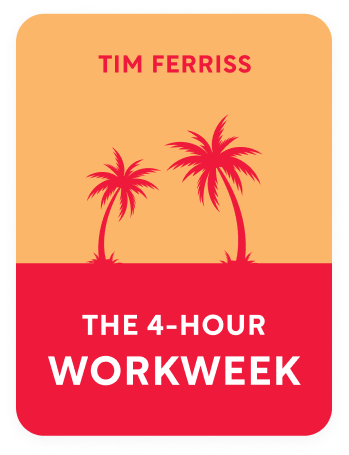

This article is an excerpt from the Shortform book guide to "The 4-Hour Workweek" by Tim Ferriss. Shortform has the world's best summaries and analyses of books you should be reading.
Like this article? Sign up for a free trial here .
Do you want to know how to create a product? How do you come up with a product that sells?
There’s a lot to consider when thinking about how to create a product. By creating a product that sells consistently and can be automated, you’ll be able to free up a lot of your time.
Keep reading to find out how to create a product that will sell, and give you the opportunity to work less.
How to Create a Product
Learning how to create a product isn’t easy. You”ll need time to brainstorm and research. Then, once you figure out how to create a product and create it, you’ll need time to test it. Here are the first steps.
Pick a Niche Market With Affordable Built-in Advertising
It’s best to choose a market that you’re a part of or have a good understanding of so you know its needs.
- Think about what groups and organizations you’re part of, either professionally or personally. What products and subscriptions related to your market do you own? For example, when the author started his business, he was a student athlete, so he focused on that demographic.
- Additionally, your target market isn’t necessarily limited to the people who actually fit your demographic, they’re also people who want to fit that demographic. For example, iPod ads feature people in their 20s and 30s, but a lot of people want to feel young and cool, so people of all ages buy the iPod.
It’s important to choose a niche market specifically, because if your market is too broad, there’s a lot of competition and a lot of free information, and it’s expensive to advertise to such a big group. For example, the student athlete market is large and scattered. The author chose to focus on athletes in specific sports, martial artists and powerlifters.
It’s also important that there’s a way for you to reach your market. You’re going to be advertising your product in magazines, so do some research on how to create a product and how to market it:
- Of the markets you’ve brainstormed, which of them have interest-specific magazines? Look at bookstores or in Writer’s Market to get a sense of the magazine options.
- Call these magazines’ ad departments and ask for their rates, readership, and samples. Look in the back issues for ads by direct-to-consumer sellers. If you find that these sellers often take out ads in this magazine, that means that they’re making money from advertising in this specific magazine, and you can too.
Before moving on to the next step, confirm your chosen market meets the following criteria:
- You’re familiar with it.
- A full-page ad in its magazine costs less than $5,000.
- The magazine has a readership of at least 15,000.
Come up With Possible Products—Without Spending Money
There are two sub-steps to step #2: brainstorm product ideas and then evaluate them against criteria.
Sub-Step A: Brainstorm Products
There are three options for finding products and the last option is the one you’re probably going to want to use.
Option #1: Resell Something That Already Exists
Reselling is the easiest of the three options, and it’s quick to set up, but it comes with some disadvantages:
- Reselling isn’t very sustainable because unless you have exclusivity (which is hard to get), you have to compete with other resellers.
- Reselling isn’t very lucrative because when you buy wholesale, you usually only get 40% off retail. You also may need a business tax ID to buy wholesale. To get a tax ID, you’ll have to file for a business structure, which costs between $100-200. The author recommends an LLC structure.
However, reselling is a great option for certain products:
- Back-end products. Back-end products are add-ons to something the customer already owns. For example, if a customer owns a phone, a back-end product is a phone case. Back-end products have no advertising costs.
- Cross-sellable products. Cross-selling is selling someone a related product right after they’ve bought a different product. Again, you already have the customer’s ear, so there’s no advertising cost.
Shortform Extended Example—Edgar: Edgar is an architect. He wants to start a muse to resell hats made in Amsterdam. Edgar’s story will play out through the rest of this summary.
Option #2: License a Product
There are two ways to approach licensing. The first is to invent a product and then charge anyone who wants to sell it. Usually, you earn 3-10% of the wholesale price.
The second is to find someone who’s invented something and the license it from them. You have to give the inventor that 3-10% of the wholesale price, which leaves you with 90-97%.
Licensing involves a lot of legal work and contract negotiation, so the author doesn’t recommend it for your first muse.
Option #3: Come up With a New Product
A new product is the best option for most people. When brainstorming product ideas, keep in mind setup costs, minimum orders, and unit costs. Technology tends to have high costs in these areas so you probably want to avoid it.
There are three ways to create a product, and the third is usually the best:
Way #1: Find a generic product that you can tweak for a specific market.
Get a manufacturer to create the stock product and then put your own custom label on it. (This is called “private labeling.”)
- For example, some health practitioners sell their own line of vitamins, but they’re the exact same product you could buy elsewhere. The only difference is the label.
Way #2: Come up with a brand-new physical product.
You don’t have to handle all the creation personally. If you come up with an idea, you can hire someone else to do a prototype. (Recall the advantages of outsourcing from Chapter 9).
Way #3: Create an information product.
Information products are ideal for several reasons: they can have a 20-50 times markup and they’re cheap and fast to make. Also, they’re a lot of work to imitate. It’s easier to get around a patent than paraphrase a whole information product. (It usually only takes two to four months before exact duplicates of infomercial products start showing up.)
You might think that you need to know a lot about a subject if you’re going to sell an information product. You don’t. You only need to know more about the subject than whoever’s buying the product. And you don’t need to convince everyone to buy the product, only enough people to make you enough money to get the Target Monthly Income required for a dreamline. The author calls this amount of customers the “minimal customer base.” It’s smaller than you might think—if your dreamline requires $2,000 and your product costs $200, you only need 20 people to buy it to make $2,000 (not taking into account business costs). If the readership of the magazine you’re advertising in is 15,000, your chances of attracting the minimal customer base are pretty good.
Additionally, there’s no agreed-upon definition of an “expert.” Therefore, there’s no definitive way to decide who is or isn’t an expert; all anyone can do is get others to see them as an expert. Therefore, building yourself “expert status” isn’t deception, according to the author. It’s “superior positioning.” You can achieve expert status in four weeks by doing the following:
- Read three authoritative books on your subject. Choose the top three off the New York Times bestseller list. Summarize them.
- Collect credibility indicators. Credibility indicators are things like degrees or membership in organizations—basically, letters or attributions after your name.
- Find organizations that work with your topic and join them. Choose ones with official-sounding names and easy membership requirements. For example, you can join the Association for Conflict Resolution simply by signing up and paying a fee online.
- Search for the nearest leading university and offer to give a free seminar. Advertise your seminar with posters. Then give free seminars at two leading companies in the same area. (When pitching yourself to the companies, tell them you’re a member of the organizations you signed up for above and that you’ve given a seminar at the leading university.) Tell the companies you won’t be selling anything and want to speak so you can get practice in a non-academic setting. Record your seminars so you can potentially sell them later.
- Optional: Revisit your list of interest magazines and write a couple articles for them, convincing them of your credibility by mentioning what you’ve done using the steps above. If they don’t think you’re enough of an expert, offer to interview a different expert, because you’ll still get a written credit in the magazine.
- Join ProfNet. ProfNet is a database of experts. When journalists need quotes for articles, they search ProfNet. Use your credibility indicators from above, and do research, so that you can appropriately give quotes. You can get named as an expert in all sorts of publications.
Here are some ideas for how to create a product that’s informational. You can personally create the content (become an expert), use public domain content (free content anyone can use), or get help from an expert. To hit a price of $50-200, come up with a combination of formats, such as six CDs and a transcription.
- Think of general skills that you could apply specifically to your market.
- For example, building a website is a general skill, but you could apply it specifically to a real estate market, and do a product on real estate broker websites.
- Consider what you could add to something that’s already selling successfully in your market. Think of specifics.
- For example, you might come up with a waterproof version of a product that people like to use on the beach.
- Ask yourself what skills people in your market—including you—want to learn. Learn the skill and then build a product that teaches it.
- Think of an inspirational story from your life. Could you turn this into a how-to product?
- Interview an expert, record the interview, and then sell the recording. Your expert doesn’t have to be the person at the top of their field, just someone who knows more about a topic than most people. For payment, offer the expert a copy of the interview to keep or sell, pay them a fee, or give them a portion of each copy sold.
Shortform Extended Example—Devi: Devi is an entrepreneur. She’s a fitness instructor and dragon boater. She wants to sell a workout program specifically for dragon boaters. Devi’s story will play out throughout the rest of the summary.

———End of Preview———
Like what you just read? Read the rest of the world's best book summary and analysis of Tim Ferriss's "The 4-Hour Workweek" at Shortform .
Here's what you'll find in our full The 4-Hour Workweek summary :
- The 4-step process to live a "retired" lifestyle now
- Find out if you're wasting the best years of your life working a 9-5
- How to create a business that makes you money without sucking up your time






